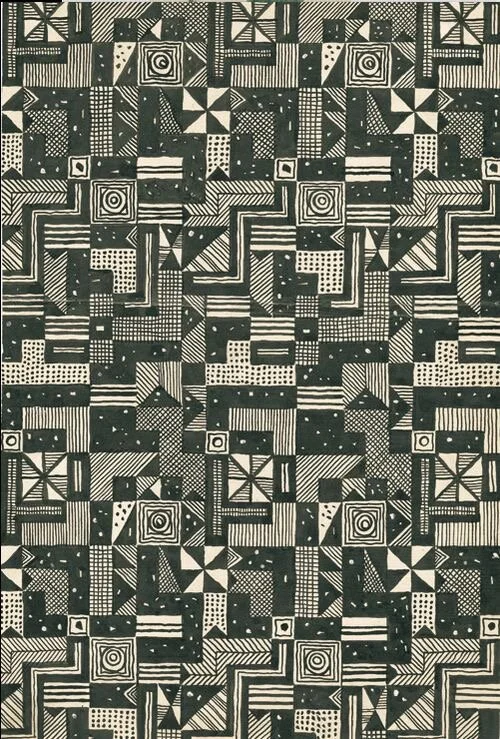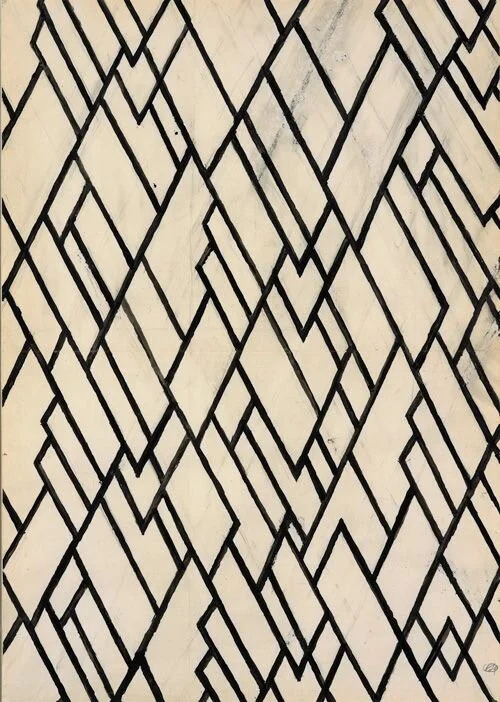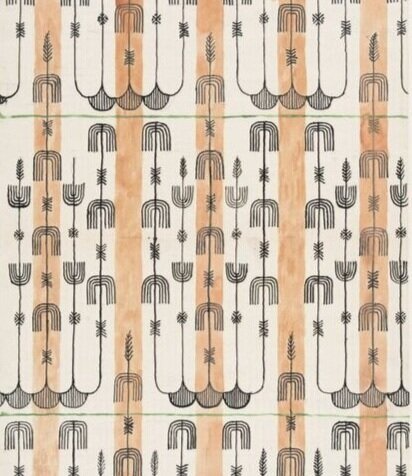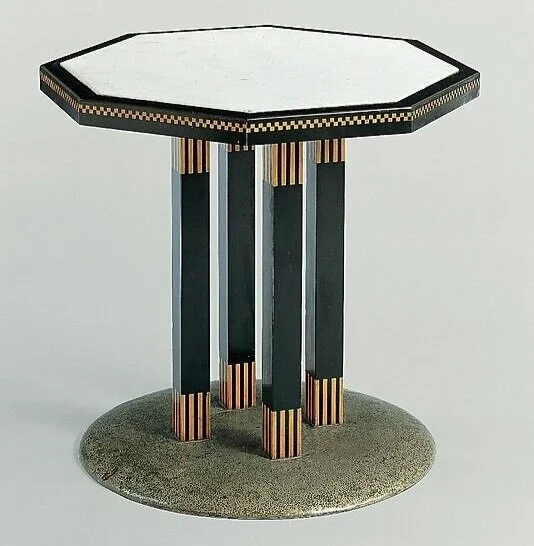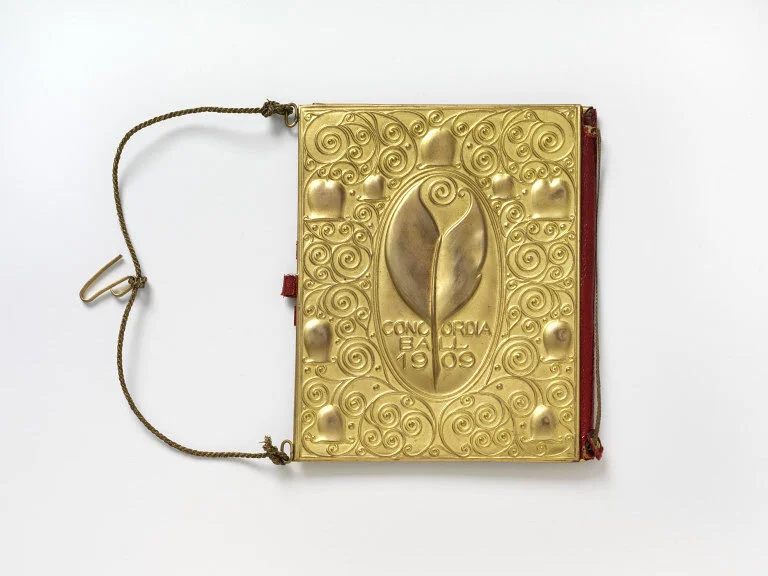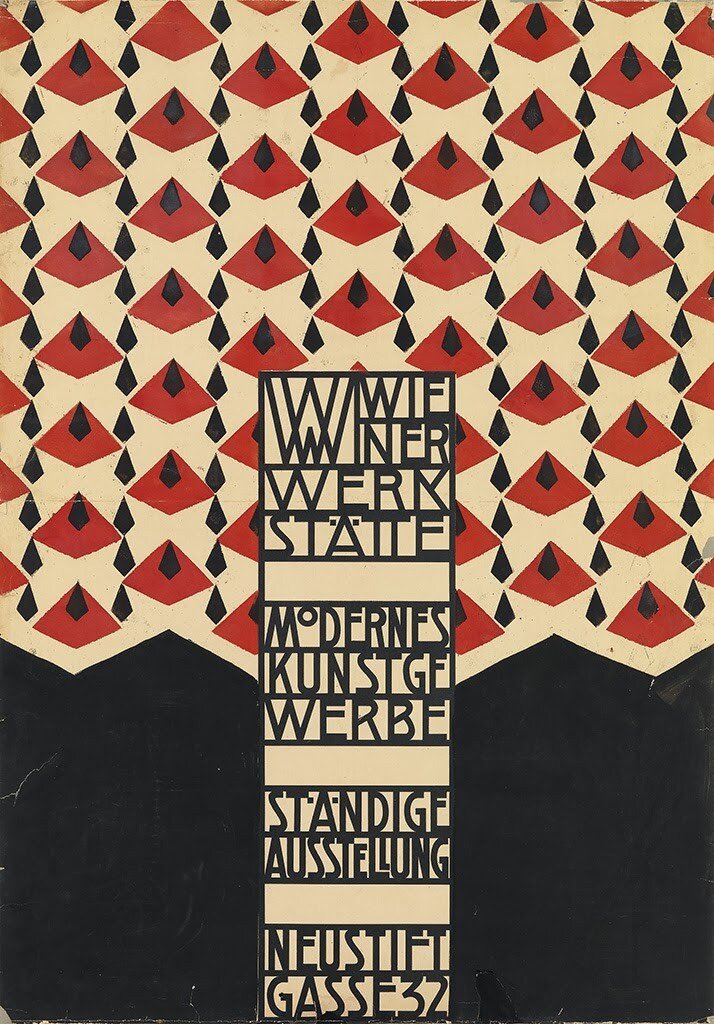Happy Birthday to Josef Hoffmann, Wiener Werkstätte Master!
Portrait of Josef Hoffmann in the studio of Koloman Moser, 1898. Photo © Neue Galerie
Josef Hoffmann, born December 15th, 1870
Born in what is now the Czech Republic, Josef Hoffmann was the son of a modestly wealthy co-owner of a textile factory. His father urged him towards a practical career as a lawyer or civil servant, sending him to prestigious schools. But Hoffmann was unhappy and transferred to an arts school, receiving his baccalaureate in 1891. In 1892 he began his studies at the Academy of Fine Arts Vienna under Karl Freiherr von Hasenauer and Otto Wagner, two of the most prestigious architects of the period. Together this group and a few others came together to form the Siebener Club, a forerunner of the Vienna Secession.
Most known for his architecture, Hoffmann’s vast body of work includes furniture, glass, metalwork, porcelain, and textiles. Hoffmann’s main goal with his work was in unifying architecture with interior elements.
Stoclet Palace, Josef Hoffmann. Completed 1911.
He joined with Koloman Moser in 1903 to establish the Wiener Werkstätte (Vienna Workshop) with financial support from textile industrialist Fritz Warndorfer. The workshop was multi-disciplinary, with specialties including architecture, furniture design, metalwork, leatherwork, bookbinding, and woodworking. All of these disciplines worked together to create a unified vision.
In 1909 the textiles division the Werkstätte was established, and from 1910 to 1932 thousands of fabric designs for tablecloths, drapes, curtains, wall coverings, and upholstery, and fashion were created. The partner of choice to produce these goods, Austrian mill Backhausen, maintains a legendary archive and still produces many of the designs. Hoffmann was prolific in the area of fabric design, and his textiles were often highly stylized or geometric, with a rhythmic simplicity.
As for Hoffmann’s personal life, he married Anna Hladik in 1898 and they had a son, Wolfgang, in 1900. In 1925, Wolfgang emigrated, together with one of his father’s former students Pola Weinbach (later Pola Stout), to New York and made significant contributions to American modernism as an interior design duo. Pola later split from Wolfgang, remarried, and eventually became an influential woolens designer.
Bronzite glasses, produced with the iconic glassmaker Lobmeyr
Talents like Oskar Kokoschka, Egon Schiele and Le Corbusier were among Hoffmann’s students and mentees, and the influence of the Wiener Werkstätte, especially as filtered the the Bauhaus, is enormous. A master designer who could execute across many fields, Hoffmann’s work has an edge to it that seems to transcend time, looking as fresh today as when it was first conceived.
ois Guade zu Deim Geburdstog! Všechno nejlepší k narozeninám! Herzlichen Glückwunsch zum Geburtstag! And happy birthday!











